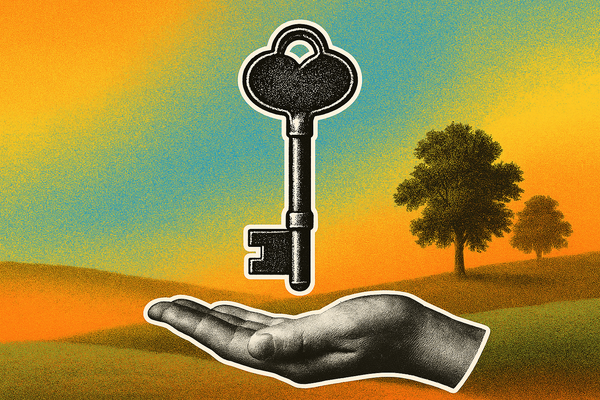Anti-Budgeting: Five Ways to Automate Your Finances Without a Budget
You don’t need a strict budget to manage money well—set up an anti-budget system that automates the essentials, and let the structure do the work for you.

We’ve already made the case that budgeting doesn’t work for most households. If you missed it, you can read our take here: Why budget culture often fails, and what to do instead.
In short, budgets want you to track every single expense, and it’s easy to feel guilty if you slip up. Real life isn’t as tidy as a spreadsheet, so it’s no wonder this approach can be frustrating. Luckily, there are better ways to manage your money.
You can still keep your household finances organized. The key is finding systems that don’t require you to track every expense or colour-code your spending every day. Here are five ways to manage your money without a strict budget, and none of them rely on guilt.
1) Ramit Sethi’s Conscious Spending Plan
Ramit Sethi's Conscious Spending Plan was popularized in his book I Will Teach You to Be Rich. The plan isn’t about tracking every dollar. It’s about setting up four big buckets and letting automation do the rest:
- Fixed monthly costs (rent/mortgage payments, utilities, insurance, groceries, subscriptions, and memberships): 50 to 60 percent
- Investments (401(k), Roth IRA, RRSP, and TFSA accounts): around 10 percent
- Savings (short-term goals: house down payment, vacation, and emergency fund): 5 to 10 percent
- Guilt-free spending: 20 to 35 percent
All of the buckets are based on monthly take-home pay.
After you’ve taken care of your fixed costs, investments, and savings, you don’t have to question what’s left. That’s the guilt-free part. Enjoy buying sneakers, ordering takeout, or planning a weekend trip.
This method is great for anyone who wants to keep their finances in order without extra stress. You’ll know your essentials are covered, you’re saving, and you can spend the rest without feeling guilty.
Learn more about the Conscious Spending Plan.
2) Dana Miranda’s Money Map
Dana Miranda offers a Money Map: a way to understand your broader financial situation without having to plan for every dollar. The plan involves four key pillars:
- Resources: Money, assets, and credit available to spend.
- Commitments: Monthly bills and expenses.
- Goals: Savings, investments, and debt repayment plans.
- Spending: Remaining amount available to spend.
One of the unique features of the Money Map is that it not only accounts for your income and assets under 'Resources', but also available credit. With 'Commitments', it's important to fully understand the consequences of non-payment. Similar to Ramit Sethi's guilt-free spending bucket, the 'spending' pillar is your 'Yes Fund', with the goal that there are no restrictions on this section, and you're able to spend however you want.
The best thing about the Money Map is how easy it is to use and share. Couples can even put it on the fridge and talk about whether their plan makes sense. It’s less about crunching numbers and more about seeing the big picture.
3) Needs, Wants, Savings: The 50/30/20 Rule
The 50/30/20 rule is simple and effective. First, figure out your after-tax income. And if you manage your household finances with your partner, then simply add your after-tax income together.
Then divide your take-home pay into three categories:
- Needs: 50 percent for needs like housing, groceries, insurance, health care, essential clothing, minimum debt payments, and utilities.
- Wants: 30 percent for wants like travel, eating out, entertainment, shopping, or streaming services.
- Savings: 20 percent for savings, investments, an emergency fund, and debt repayment.
The benefit is that you don’t need to keep tabs on every transaction. If your overall spending looks close to those percentages, you’re on track. Some households adjust the ratios in expensive cities, but the logic stays the same: keep needs under control, keep savings healthy, and let wants fill the space in between.
It’s not precise, but it gives you a quick gut check. If your needs are eating 70 percent of your income, you know something has to change.
Read Investopedia's 50-30-20 Budget Rule Article.
4) Pay Yourself First
The Pay Yourself First model is sometimes referred to as 'reverse budgeting' because it prioritizes savings goals over other expenses. The principle is straightforward: when money comes in, a portion is automatically directed to savings and investments before you have a chance to touch it.
It works because you never get the chance to spend that money in the first place. The transfers happen on payday, not at the end of the month when there’s nothing left. The rest of your income is then available for bills and spending.
In terms of amounts, you can leverage the 50/30/20 method discussed above and allocate 20% of your monthly after-tax income to investment, savings, and a debt repayment bucket.
It’s as close to “set it and forget it” as household finance gets. You decide once what percentage you can live without, and then you move on with your life.
5) The Micro No-Buy Challenge
Not quite a household financial strategy, and more of a way to reset spending habits, the No-Buy Challenge is a declaration to not spend on a particular category for a set period.
It could be delivery apps for a month, new clothes for a season, or impulse purchases after 9pm. Whatever money you save goes directly into a separate account. You can label it something fun — “Vacation 2025”, which ends up being much more motivating than a simple "Savings". And it can also lead to a complete reset in habits, realizing that you have more than enough 'stuff' already.
@elysiaberman I swear my apartment feels like an episode of hoarders to me now. I need LESS. #nobuyyear #minimalism #nobuy #shoppingaddiction #shopaholic #debtfreejourney
♬ original sound - elysiaberman
What These Approaches Have in Common
On the surface, these systems look different. One has buckets, another has maps, one just tells you to save first and deal with the rest later. But they’re all trying to solve the same headache: the constant pressure to track every dollar.
There’s some comfort in realizing you don’t need to be perfect with money. You just need a structure that can survive the chaos of real life.
Start with the one that feels like it suits you best. Try it, see how it fits. If it clicks, keep going. If it doesn’t, swap it out. The goal isn’t flawless execution. It’s making steady progress while your money quietly organizes itself in the background.





